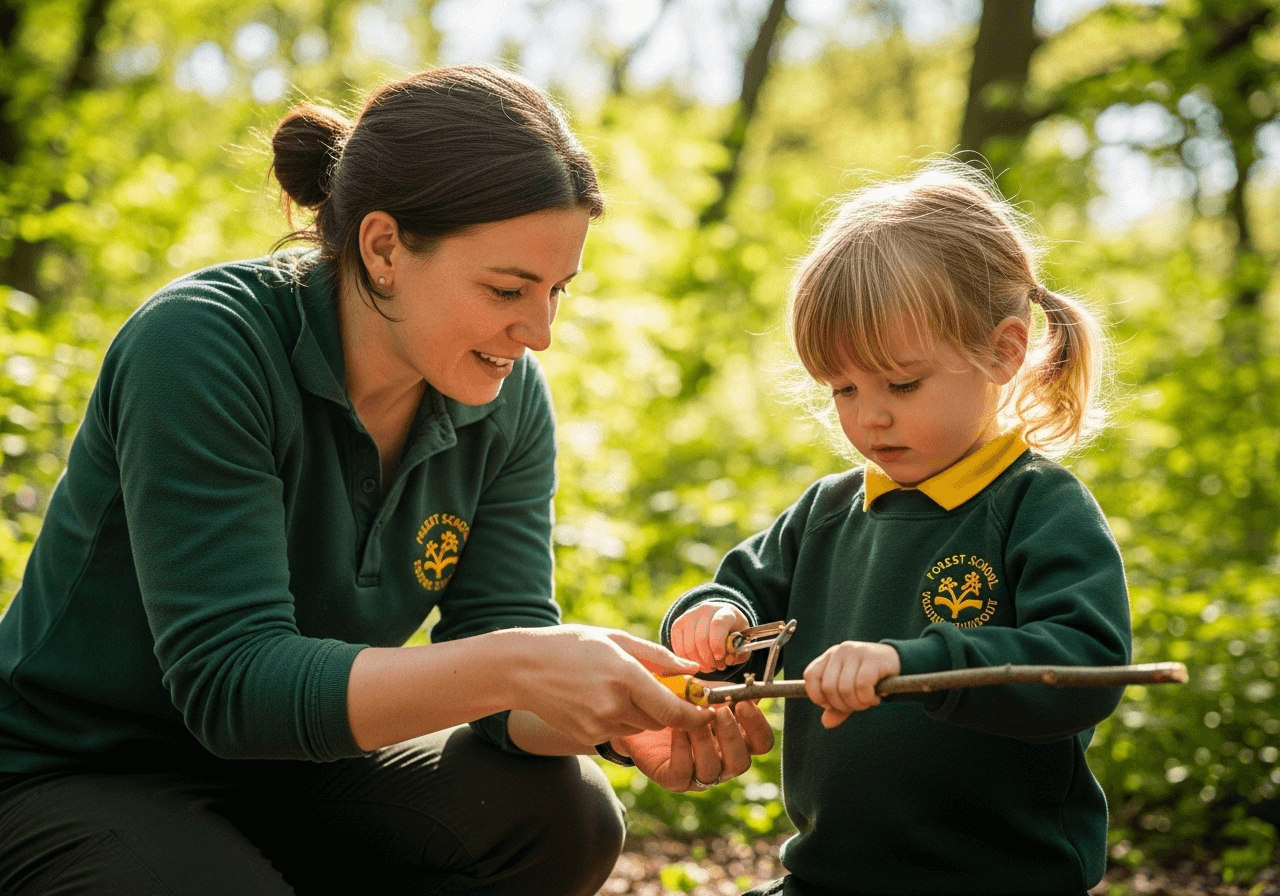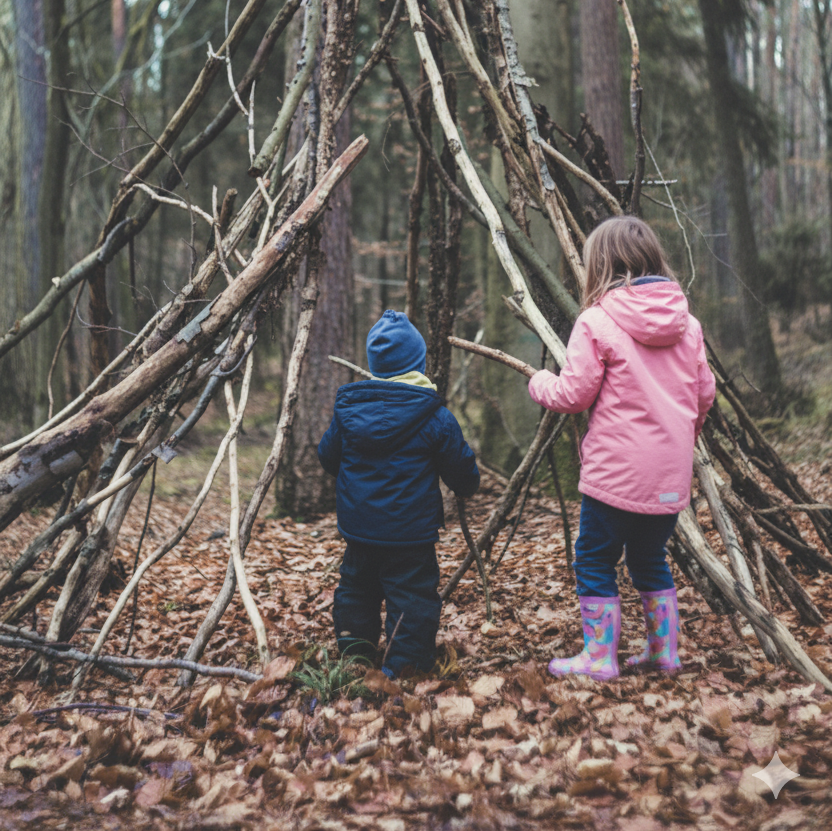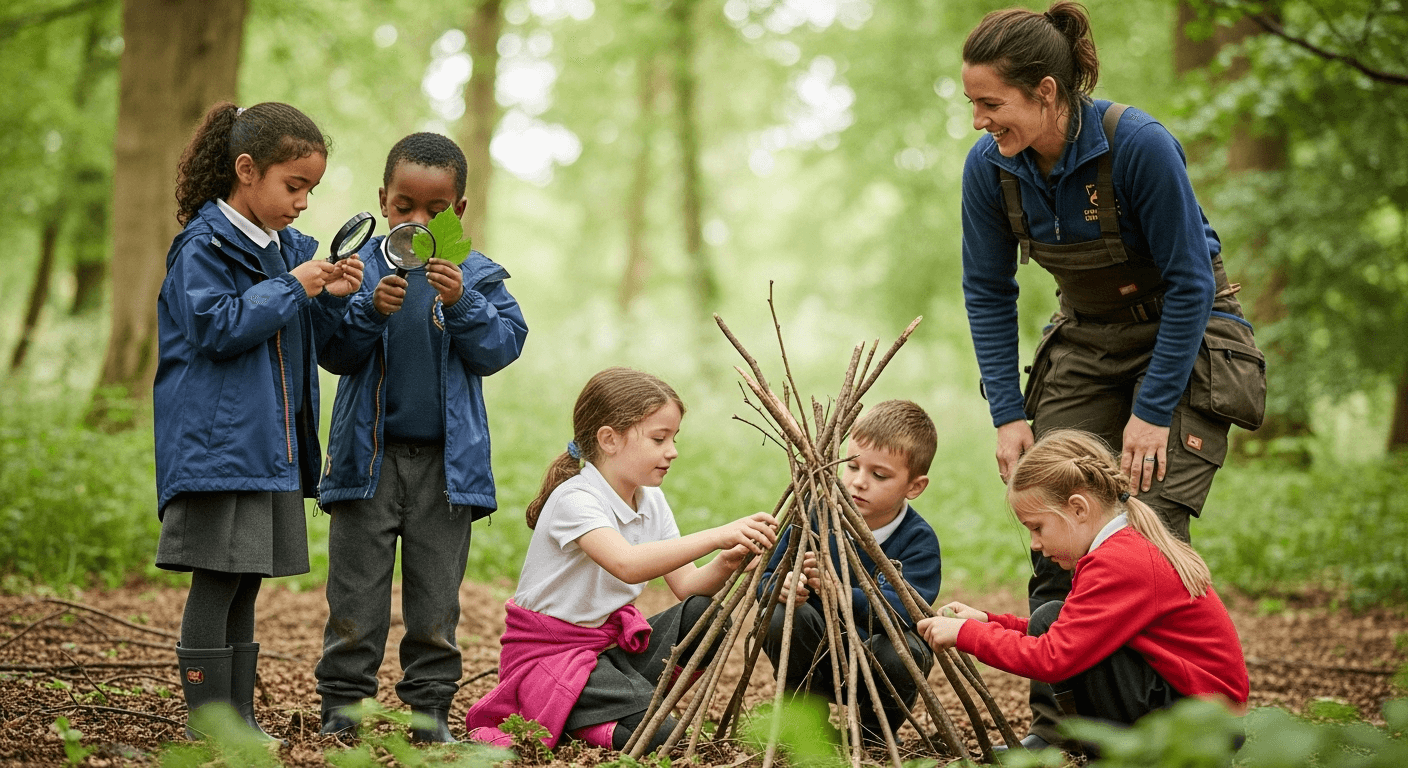· SEN & Inclusion · 8 min read
The Practical Benefits of Forest School for Children with SEN
Explore the practical benefits of Forest School for children with Special Educational Needs (SEN). This article details how nature-based, child-led learning supports sensory development, social skills, and emotional regulation, providing a vital alternative to traditional classroom settings.

Forest School provides a unique, nature-based learning environment with significant advantages for children with Special Educational Needs (SEN). Unlike the structured confines of a traditional classroom, the outdoors offers a dynamic, adaptable space where children develop crucial life skills at their own pace. With over 1.7 million pupils in England now having special educational needs (19.5% of all pupils), understanding effective alternative provisions has never been more critical.
This article outlines the practical benefits of the Forest School approach for children with a wide range of needs, from communication difficulties to sensory processing disorders.
Understanding the Forest School Approach
Forest School is a long-term, child-led educational philosophy delivered by qualified practitioners in natural woodland settings. Originating from Scandinavian outdoor kindergartens, this approach focuses on holistic development, fostering resilience, confidence, independence, and creativity through hands-on experiences with nature.
This is not simply ‘outdoor play’ – sessions are carefully planned and facilitated by qualified Level 3 Forest School Leaders to support specific learning and development outcomes within a safe, nurturing environment. The approach emphasises process over product, allowing children to learn through exploration, risk-taking, and reflection.
The Growing Need for Alternative Educational Approaches
The latest government statistics reveal a concerning trend: the percentage of pupils with an EHC plan has increased to 5.3% in 2025, from 4.8% in 2024, while pupils with SEN support has risen to 14.2% from 13.6%. This represents an increase of 93,700 pupils in just one year, highlighting the urgent need for diverse, inclusive educational approaches.
For many of these children, traditional classroom environments can be overwhelming, restrictive, or simply unsuitable for their learning style. Forest School offers a complementary approach that addresses individual needs in a more flexible, responsive setting.
Evidence-Based Benefits for Children with SEN
The flexible and child-centred nature of Forest School makes it particularly effective for children who find conventional educational settings challenging. Research and practitioner observations consistently demonstrate wide-ranging benefits that directly address many difficulties associated with various special educational needs.
1. Supporting Sensory Processing and Integration
The natural world provides rich, authentic sensory experiences that are both calming and organising. For children with Sensory Processing Disorder (SPD), autism spectrum conditions, or ADHD, Forest School offers:
- Proprioceptive input through climbing, digging, and carrying natural materials
- Vestibular stimulation via balance challenges on logs and uneven terrain
- Tactile experiences with varied textures like bark, leaves, mud, and water
- Sensory regulation through the naturally calming environment without artificial stimulation
These experiences help children develop better sensory integration skills and learn effective self-regulation strategies in a non-clinical, enjoyable context.
2. Developing Communication and Social Skills
Forest School’s collaborative, practical approach naturally encourages communication without the pressure of formal classroom expectations. Benefits include:
- Natural conversation arising from shared tasks and discoveries
- Non-verbal communication development through observing nature and reading social cues
- Cooperative skills built through activities like shelter building and tool sharing
- Turn-taking and negotiation practised in authentic, purposeful contexts
- Reduced social anxiety in smaller groups with shared focus on activities rather than direct social interaction
3. Building Confidence Through Achievable Risk
Forest School is built around the concept of ‘beneficial risk’ – challenges that stretch children safely while building genuine confidence. This approach:
- Develops risk assessment skills through real-world decision making
- Builds self-efficacy via tangible achievements like successful fire lighting or tool use
- Increases resilience through overcoming natural challenges
- Fosters independence by trusting children with real responsibilities
- Improves self-esteem through accomplishment rather than praise alone
4. Enhancing Physical Development and Motor Skills
The varied terrain and activities of Forest School naturally support physical development across all areas:
Gross Motor Skills:
- Balance and coordination through navigating uneven ground
- Core strength from climbing and balancing activities
- Spatial awareness development in three-dimensional natural spaces
Fine Motor Skills:
- Precision grip development through tool use and craft activities
- Hand-eye coordination via activities like whittling and fire lighting
- Bilateral coordination through rope work and knot tying
5. Supporting Mental Health and Emotional Regulation
Time in nature has well-documented mental health benefits, particularly relevant for children with SEN who may experience higher levels of anxiety and stress. Forest School supports:
- Stress reduction through connection with nature and physical activity
- Emotional regulation via mindful activities and nature-based calming techniques
- Anxiety management through predictable routines in unpredictable natural settings
- Improved mood from vitamin D exposure and physical exercise
- Better sleep patterns from physical tiredness and reduced screen time
A Typical Forest School Session Structure
While every session adapts to the group’s needs and interests, a familiar structure provides security and routine that particularly benefits children with SEN:
| Session Stage | Duration | Activity Description |
|---|---|---|
| Circle Time | 10-15 mins | Welcome gathering at base camp, weather check, safety reminders, and session introduction |
| Free Flow | 45-60 mins | Child-led exploration and planned activities running simultaneously |
| Tool/Fire Time | 20-30 mins | Focused skill development with tools or fire (when appropriate) |
| Reflection Circle | 10-15 mins | Sharing discoveries, challenges, and achievements with snack time |
| Pack Away | 5-10 mins | Collaborative site care and equipment management |
This structure can be modified for different age groups, session lengths, and specific needs within the group.
Addressing Specific SEN Conditions
Autism Spectrum Conditions
- Predictable routines within unpredictable natural settings
- Sensory regulation opportunities without overwhelming stimuli
- Special interests can be incorporated (e.g., collecting, categorising natural objects)
- Reduced social pressure with authentic interaction opportunities
ADHD
- Physical activity channels energy positively
- Natural environment reduces hyperactivity
- Hands-on learning suits kinesthetic learners
- Immediate consequences teach cause and effect
Anxiety Disorders
- Reduced academic pressure in non-formal setting
- Calming natural environment
- Achievement-based confidence building
- Mindfulness opportunities through nature connection
Communication Difficulties
- Reduced verbal pressure with action-based learning
- Visual and tactile learning opportunities
- Natural conversation starters through shared experiences
- Alternative communication through art and construction
Safety and Risk Management for SEN Groups
Forest School Leaders are trained in comprehensive risk-benefit assessment, particularly important when working with children with additional needs:
- Enhanced risk assessments consider individual needs and behaviours
- Higher adult-to-child ratios typically 1:4 or 1:6 depending on needs
- Individualised safety planning with specific considerations for each child
- Clear boundaries and rules consistently applied with visual supports where needed
- Emergency procedures adapted for the group and setting
Getting Started: What Parents and Educators Should Know
Choosing a Forest School Provider
When selecting Forest School provision for children with SEN, consider:
- Qualified Level 3 Forest School Leaders with additional SEN training
- Appropriate insurance covering SEN provision
- Experience working with children with additional needs
- Flexible approach to individual requirements
- Clear communication with parents and schools about progress
Preparing Your Child
To help children with SEN transition to Forest School:
- Visit the site beforehand if possible
- Prepare weather-appropriate clothing in advance
- Discuss activities they might encounter
- Share relevant information about their needs with leaders
- Start with shorter sessions if needed
Measuring Success and Outcomes
Forest School assessment focuses on holistic development rather than academic achievement. For children with SEN, progress indicators might include:
- Increased engagement in activities and with peers
- Improved emotional regulation and reduced anxiety
- Development of independence skills
- Enhanced physical confidence and coordination
- Better communication and social interaction
- Increased resilience when facing challenges
Conclusion
Forest School represents a powerful complement to traditional education for children with Special Educational Needs. By providing a safe, nurturing outdoor environment that celebrates individual differences and learning styles, it enables children to develop essential life skills while building confidence and resilience.
As SEN numbers continue to rise, Forest School offers an evidence-based alternative that addresses the whole child – their physical, emotional, social, and cognitive development. It’s not a replacement for other interventions but a valuable addition to the toolkit of inclusive education.
For the growing number of children who struggle in traditional educational settings, Forest School can be transformative – offering a space where they can discover their strengths, develop crucial skills, and most importantly, experience the joy of learning in nature.
Frequently Asked Questions (FAQ)
Is Forest School safe for children with SEN?
Safety is paramount in Forest School provision. All sessions are led by qualified Level 3 Forest School Leaders who conduct thorough risk-benefit assessments for both the site and all activities. Higher adult-to-child ratios are maintained for SEN groups (typically 1:4 to 1:6), ensuring all children receive appropriate supervision and support based on their individual needs.
What if my child has physical mobility challenges?
Forest School Leaders are trained in inclusive practice and will adapt sites and activities to accommodate children with varying physical abilities. The focus is always on what a child can achieve, with modifications made to ensure meaningful participation for all. This might include accessible pathways, adapted tools, or alternative activities that achieve similar learning outcomes.
How does Forest School differ from regular outdoor play?
Forest School is a structured educational approach facilitated by trained professionals with specific learning and developmental objectives. Unlike unstructured play, activities are carefully designed to support individual development goals, with qualified leaders observing, supporting, and extending learning opportunities. The approach follows established pedagogical principles while maintaining the child-led ethos.
Do children need an Education, Health and Care Plan (EHCP) to attend?
No. Forest School benefits children across the entire SEN spectrum, including those with diagnosed needs (whether or not they have an EHCP), those awaiting assessment, and children who simply find traditional educational environments challenging. It’s an inclusive approach that can be adapted for any child’s needs and abilities.
How do I find qualified Forest School provision near me?
Use the Forest School Finder directory to locate qualified providers in your area. Look for Level 3 qualified Forest School Leaders with experience in SEN provision. Many providers offer taster sessions or site visits to help you determine if the approach suits your child.
Can Forest School support my child’s EHCP outcomes?
Yes, Forest School can directly support many EHCP outcomes, particularly in areas of communication and interaction, cognition and learning, social emotional and mental health, and sensory and physical development. Qualified practitioners can work with schools and families to align activities with specific EHCP targets and provide evidence of progress.
References:
- Department for Education. (2025). Special educational needs in England: Academic year 2024/25. Available at: https://explore-education-statistics.service.gov.uk/find-statistics/special-educational-needs-in-england/2024-25



